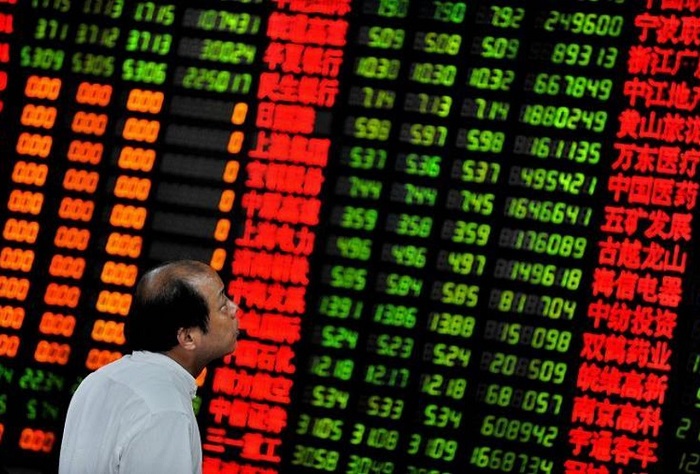Overview of Stock Market Trends

Stock market trends refer to the general direction in which the stock market is moving over a period of time. These trends can be categorized as upward, downward, or sideways.
It is crucial for investors and traders to monitor stock market trends as they provide valuable insights into the overall market sentiment and help in making informed investment decisions. By analyzing trends, investors can identify potential opportunities and risks in the market.
Impact on Investors and Traders
- Stock market trends influence the buying and selling behavior of investors. During an uptrend, investors are more likely to buy stocks in anticipation of higher prices, while during a downtrend, they may sell to limit losses.
- Traders use stock market trends to determine the best entry and exit points for their trades. They may follow trends such as momentum trading or trend following strategies to capitalize on market movements.
- Market trends also affect the overall market volatility and can impact the performance of individual stocks, sectors, or the entire market. Understanding these trends can help investors manage risk effectively.
Types of Stock Market Trends

Understanding the different types of stock market trends is crucial for investors to make informed decisions. Let’s explore the various types of trends and their characteristics.
Bullish Trend
A bullish trend is characterized by rising prices and investor optimism. During a bullish trend, the market experiences sustained upward movement, leading to higher stock prices. This trend is often associated with strong economic indicators and positive market sentiment.
- Example: In recent years, the technology sector has seen a bullish trend with companies like Apple and Amazon consistently reaching new all-time highs.
- Characteristics: Increasing stock prices, high trading volumes, positive investor sentiment, and overall market optimism.
Bearish Trend
A bearish trend is the opposite of a bullish trend, marked by falling prices and pessimism among investors. During a bearish trend, the market experiences a downward movement, leading to lower stock prices. This trend is often associated with weak economic indicators and negative market sentiment.
- Example: The financial sector faced a bearish trend during the 2008 financial crisis, with banks and financial institutions experiencing significant losses.
- Characteristics: Decreasing stock prices, low trading volumes, negative investor sentiment, and overall market pessimism.
Sideways Trend
A sideways trend, also known as a range-bound market, is characterized by little to no significant price movement. In a sideways trend, stock prices fluctuate within a narrow range without any clear direction. This trend is often seen during periods of market consolidation or indecision.
- Example: After a period of strong growth, a company’s stock may enter a sideways trend as investors wait for new developments or earnings reports.
- Characteristics: Flat stock prices, low volatility, trading within a narrow range, and lack of clear market direction.
Factors Influencing Stock Market Trends
Various factors play a crucial role in influencing stock market trends. These factors can range from economic indicators to global events that impact investor sentiment and market behavior.
Economic Factors
Economic factors such as interest rates and inflation have a significant impact on stock market trends. When interest rates are low, borrowing becomes cheaper, leading to increased spending and investment in the stock market. Conversely, high interest rates can deter investors from borrowing money to invest, resulting in a decline in stock prices. Similarly, inflation erodes the purchasing power of money, affecting consumer spending and corporate earnings, which in turn influence stock market performance.
Geopolitical Events
Geopolitical events, such as wars, political instability, trade disputes, and natural disasters, can have a profound impact on stock market trends. Uncertainty surrounding such events can lead to market volatility and fluctuations in stock prices. Investors tend to react to geopolitical news by adjusting their portfolios, leading to shifts in market trends.
Company Earnings and Financial Reports
Company earnings and financial reports play a crucial role in shaping stock market trends. Positive earnings reports can boost investor confidence, driving stock prices higher. On the other hand, disappointing earnings or financial results can lead to a sell-off of stocks, causing market declines. Investors closely monitor company performance and financial metrics to make informed decisions about buying or selling stocks.
Tools and Indicators for Analyzing Stock Market Trends
Analyzing stock market trends involves the use of various tools and indicators to make informed decisions. Commonly used tools include moving averages, MACD, RSI, volume indicators, and technical analysis.
Moving Averages
Moving averages are used to smooth out price data to identify trends over a specified period. The most commonly used moving averages are the simple moving average (SMA) and the exponential moving average (EMA). Traders often look for crossovers between different moving averages to signal changes in trends.
MACD (Moving Average Convergence Divergence)
MACD is a trend-following momentum indicator that shows the relationship between two moving averages of a security’s price. Traders use the MACD line and signal line crossovers to identify potential buy or sell signals.
RSI (Relative Strength Index)
RSI is a momentum oscillator that measures the speed and change of price movements. It ranges from 0 to 100 and is used to identify overbought or oversold conditions in a stock. Traders typically look for RSI values above 70 as overbought and below 30 as oversold.
Volume Indicators
Volume indicators such as on-balance volume (OBV) and accumulation/distribution lines help traders gauge the strength of a price trend. Increasing volume during price movements can confirm the validity of a trend, while decreasing volume may signal a reversal.
Technical Analysis for Predicting Trends
Technical analysis involves studying historical price and volume data to forecast future price movements. Traders use chart patterns, trendlines, and indicators to identify potential trend reversals or continuations. By analyzing past market data, traders aim to predict future stock market trends and make profitable trading decisions.
Long-Term vs. Short-Term Stock Market Trends

When it comes to analyzing stock market trends, it’s essential to understand the difference between long-term and short-term trends. Long-term trends refer to the overall direction of the market over an extended period, usually spanning several years. On the other hand, short-term trends are temporary price movements that can last anywhere from a few days to a few months.
Examples of Long-Term vs. Short-Term Trends
- Long-term trend: Over the past decade, the technology sector has shown a consistent upward trend due to advancements in innovation and increased demand for tech products.
- Short-term fluctuation: A sudden drop in oil prices due to geopolitical tensions can cause a temporary decline in energy stocks, but this may not impact the overall long-term growth of the sector.
Investment Strategies Based on Long-Term vs. Short-Term Trends
- Long-term investors often focus on fundamental analysis and invest in companies with strong financials, sustainable growth prospects, and competitive advantages. They aim to hold onto their investments for an extended period to benefit from the overall upward trajectory of the market.
- Short-term traders, on the other hand, rely more on technical analysis and market timing to capitalize on short-term price movements. They may engage in day trading or swing trading to take advantage of volatility in the market.